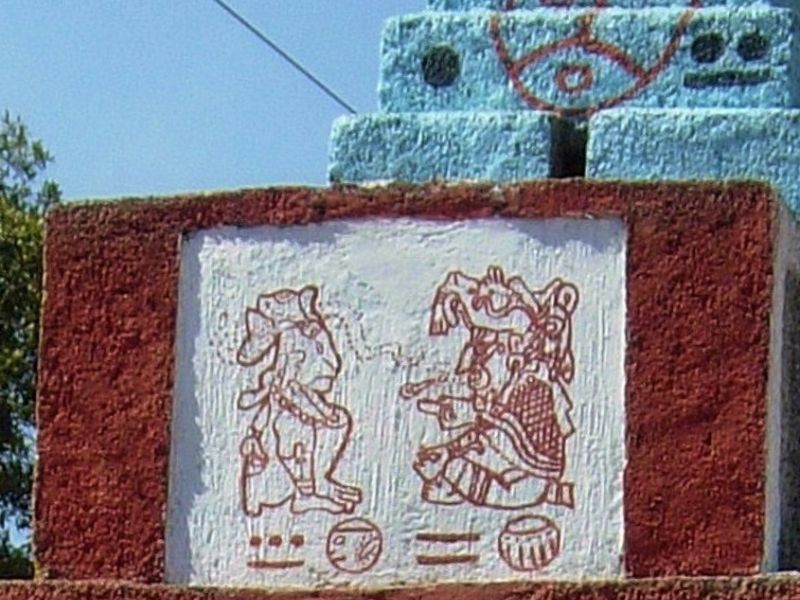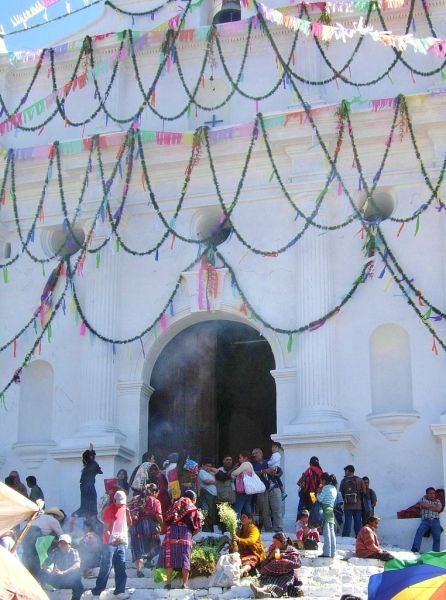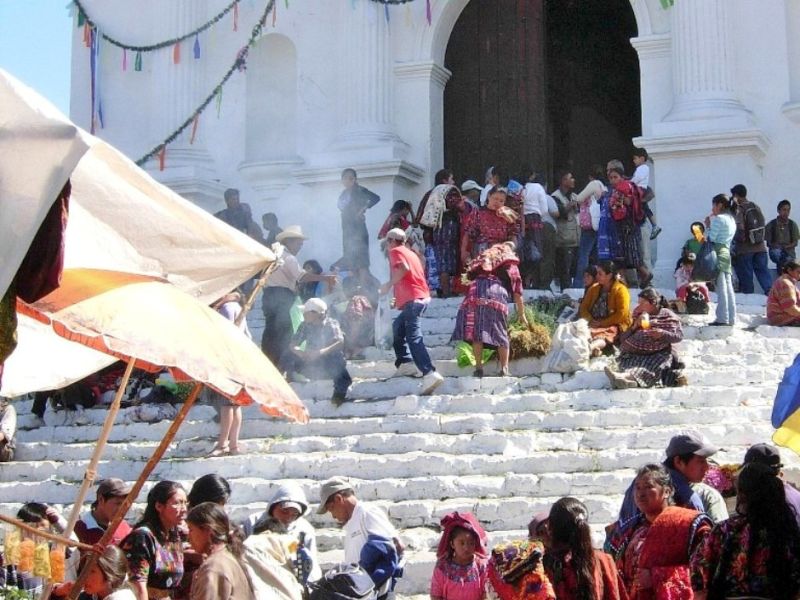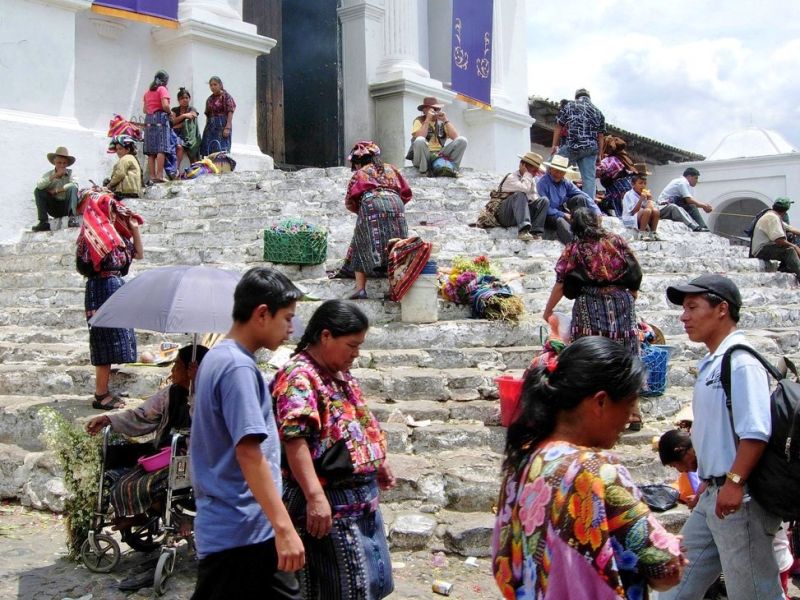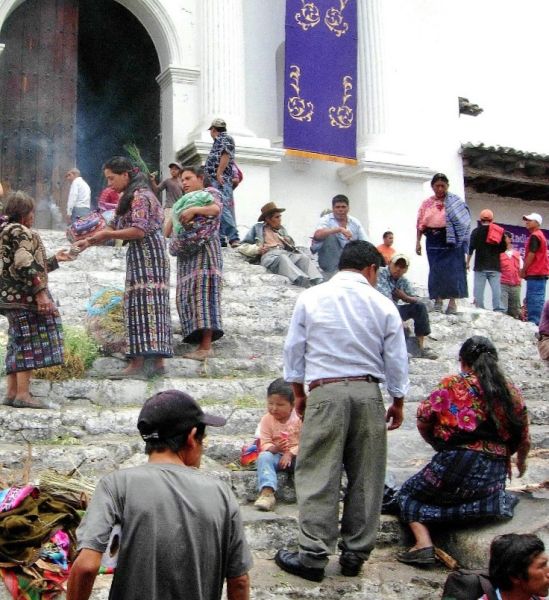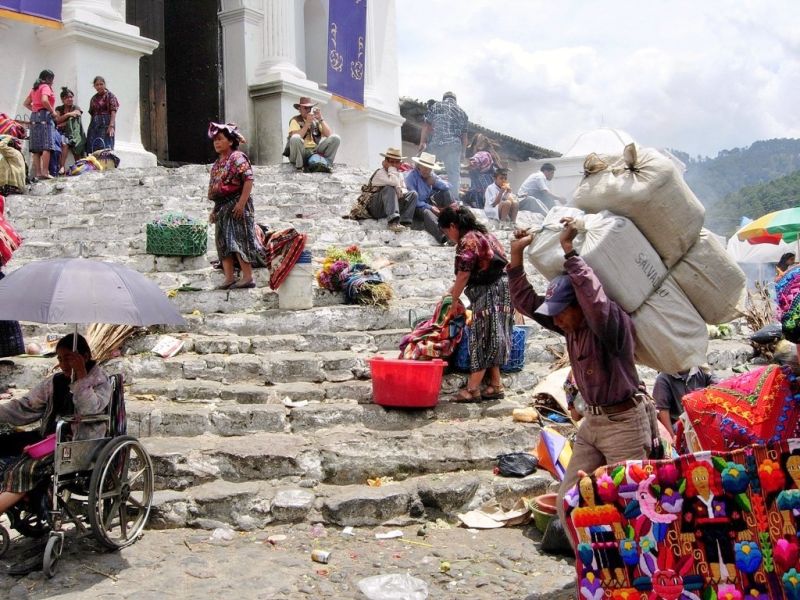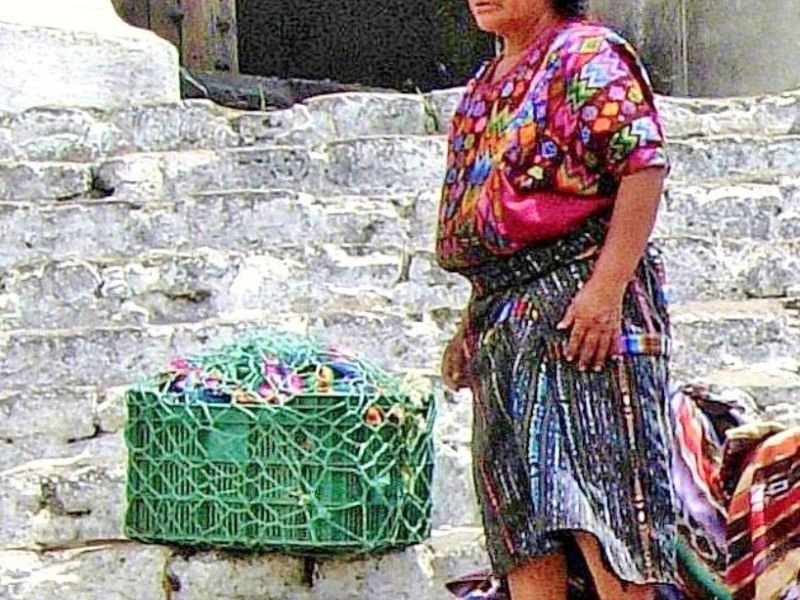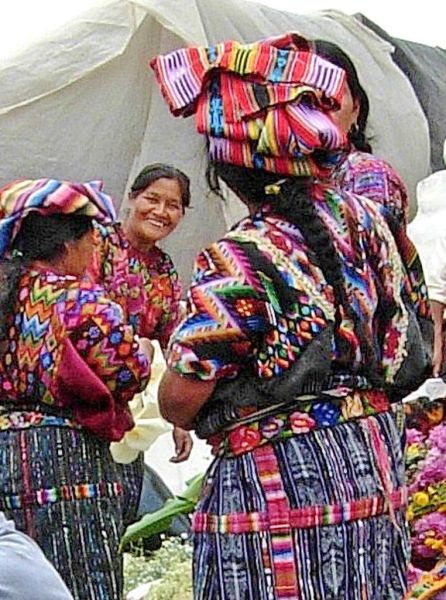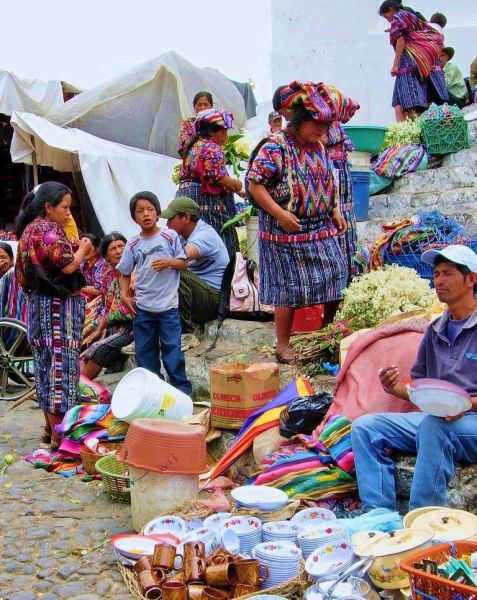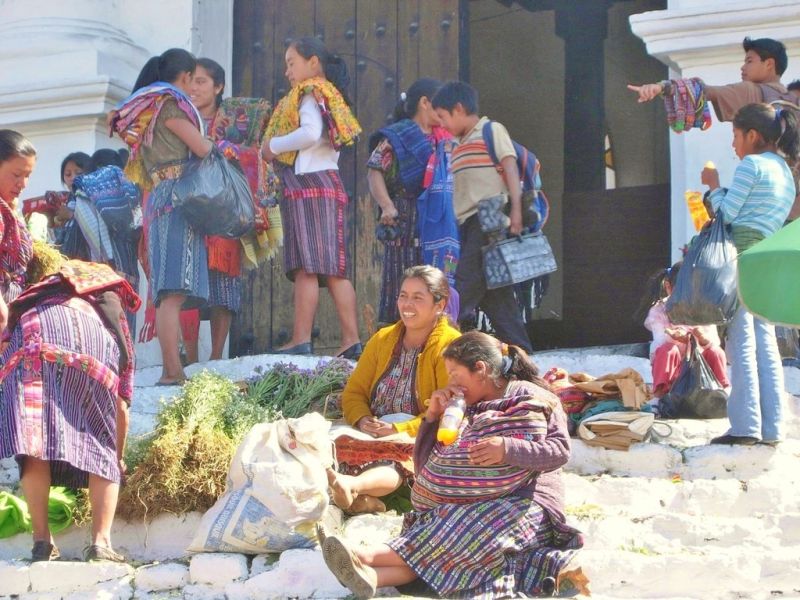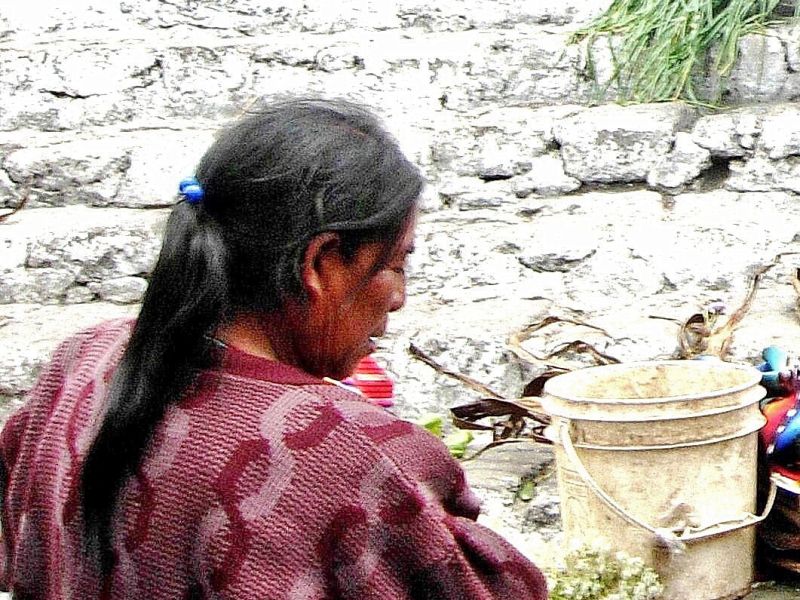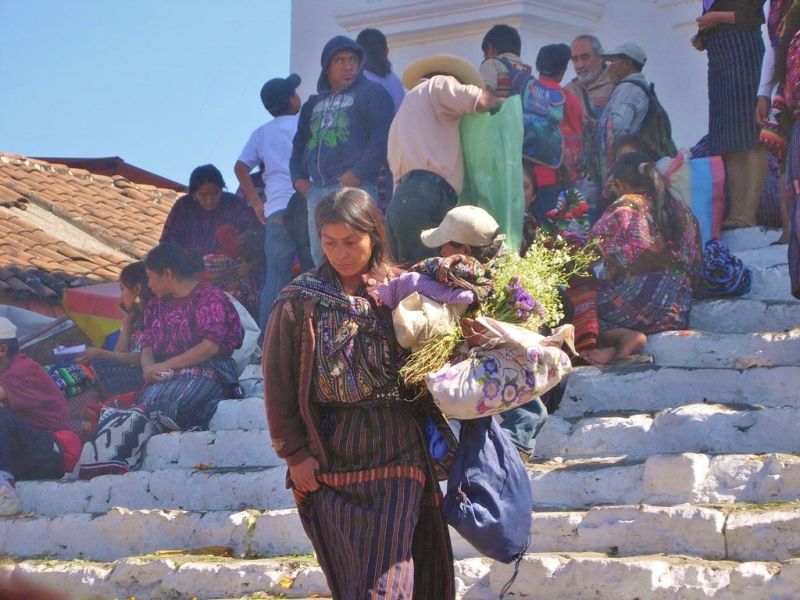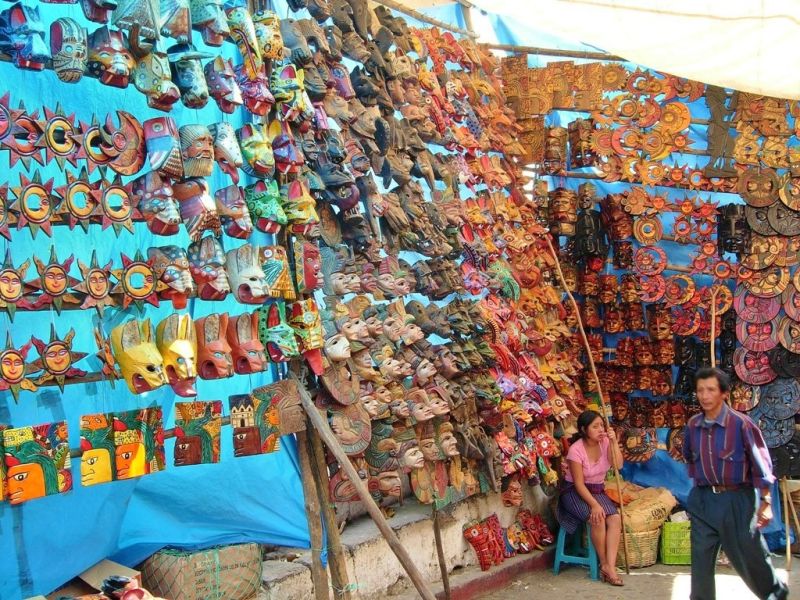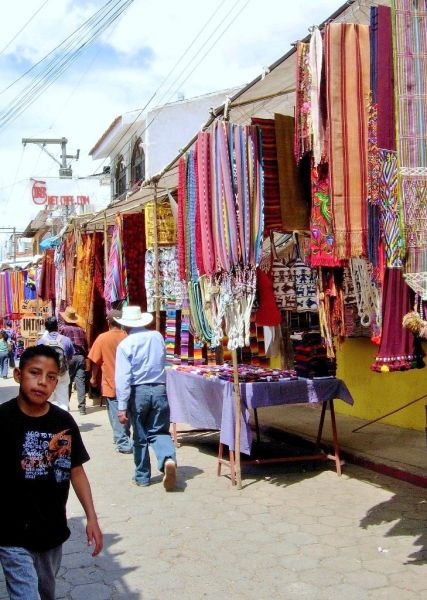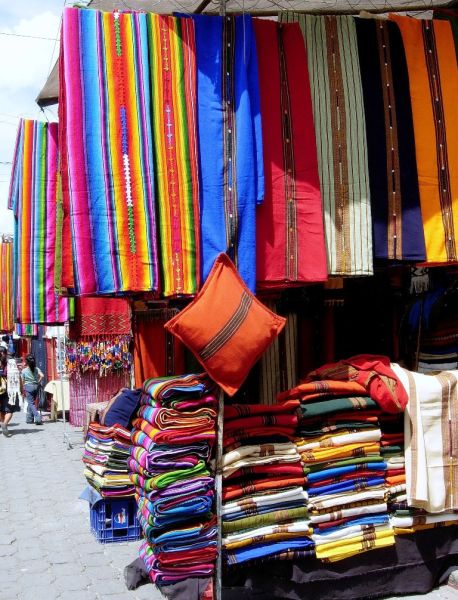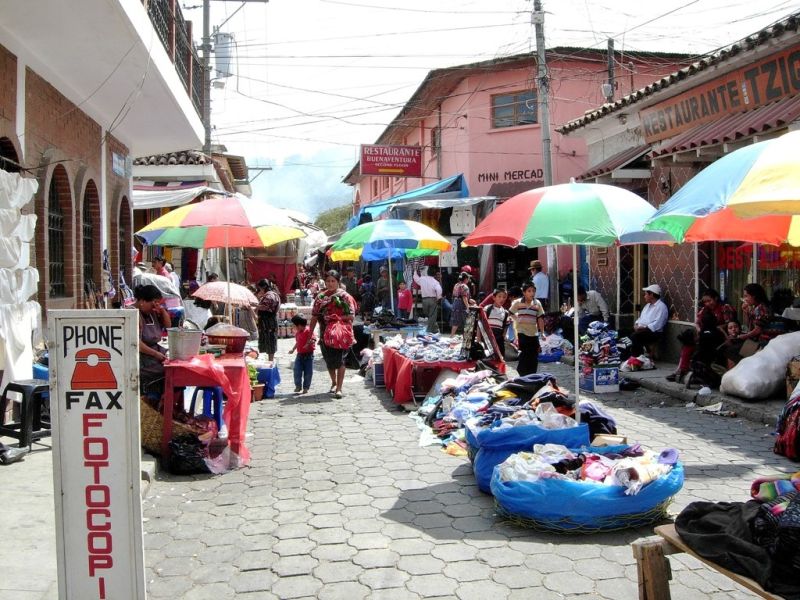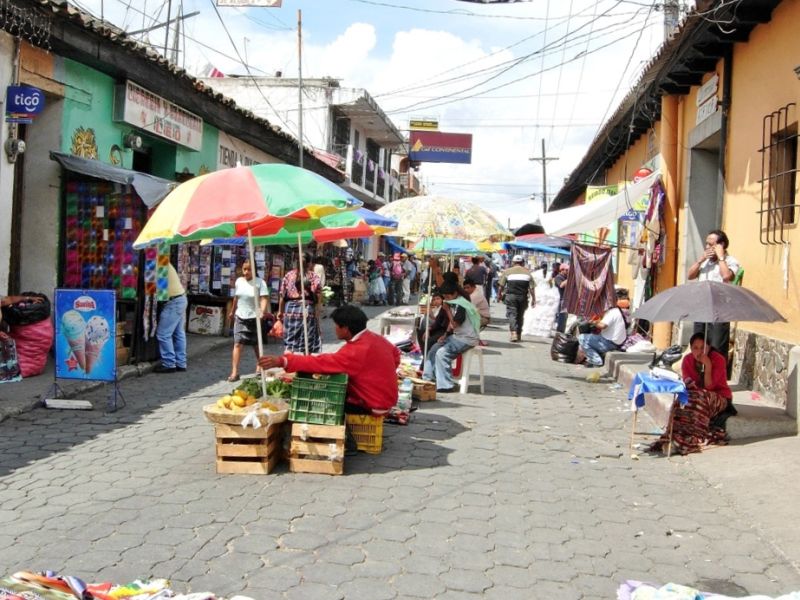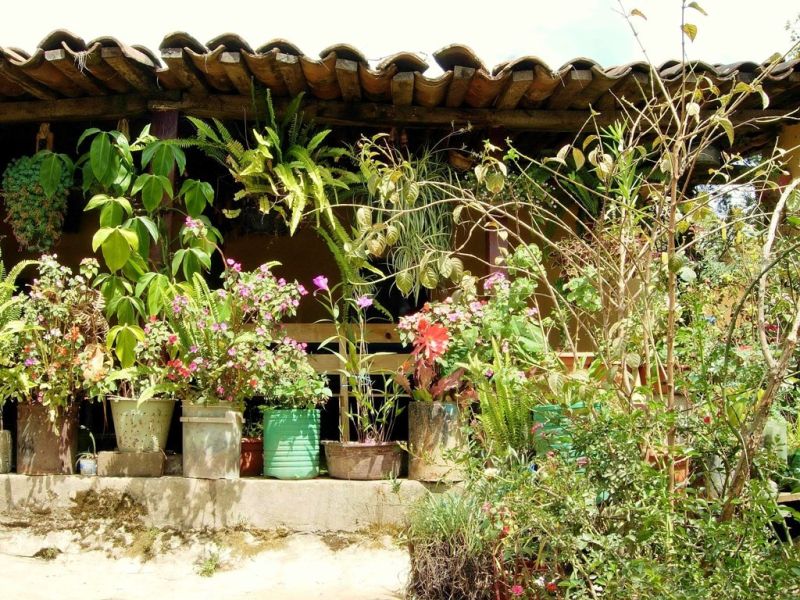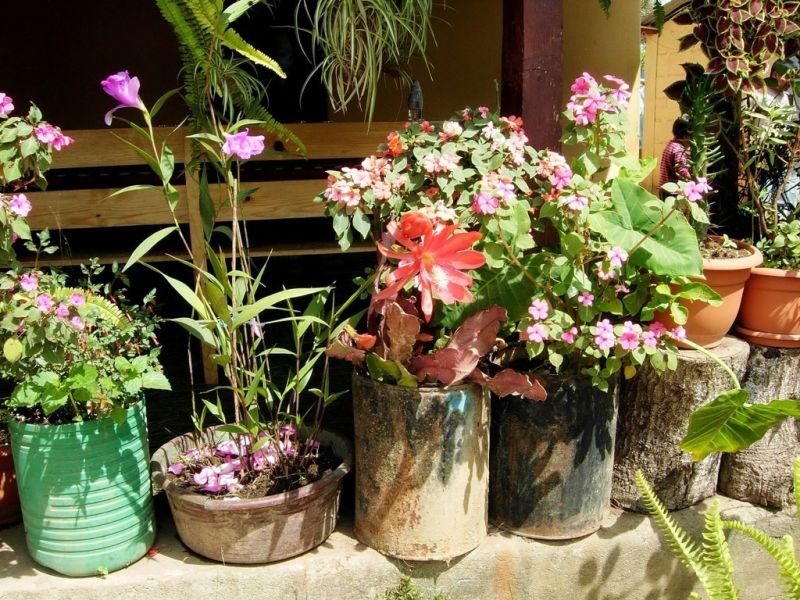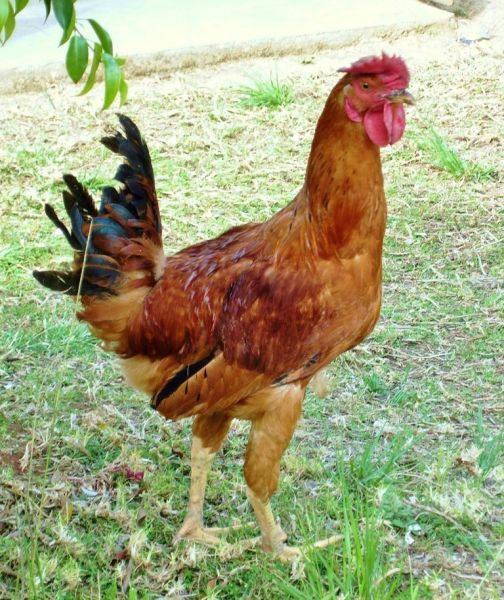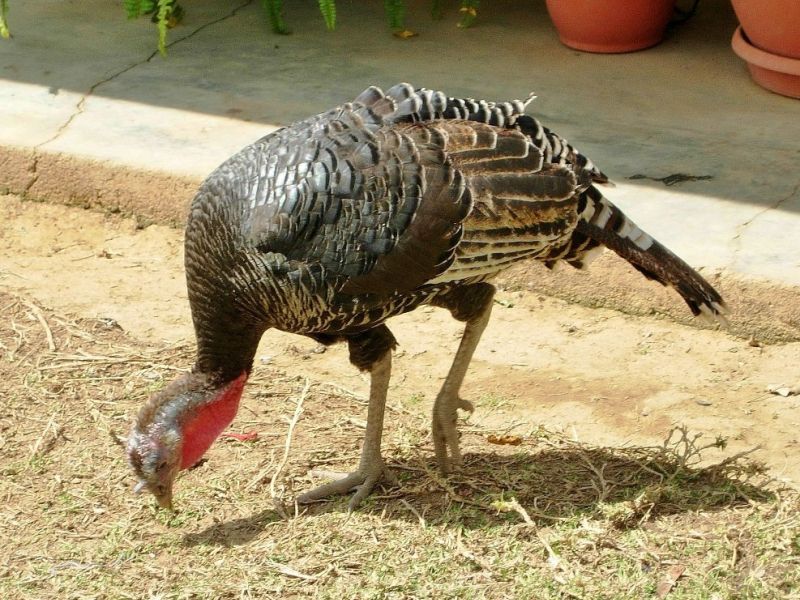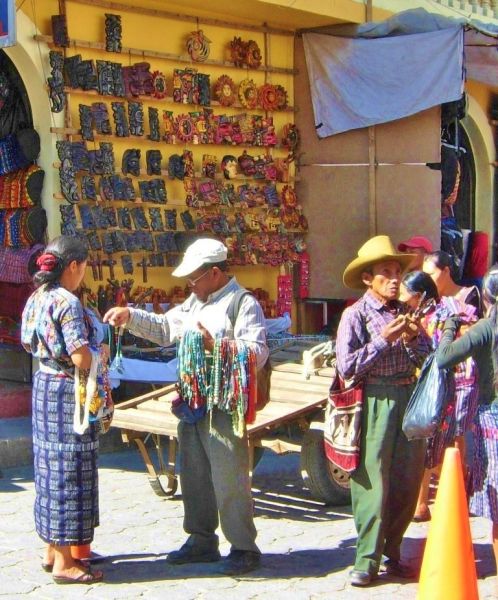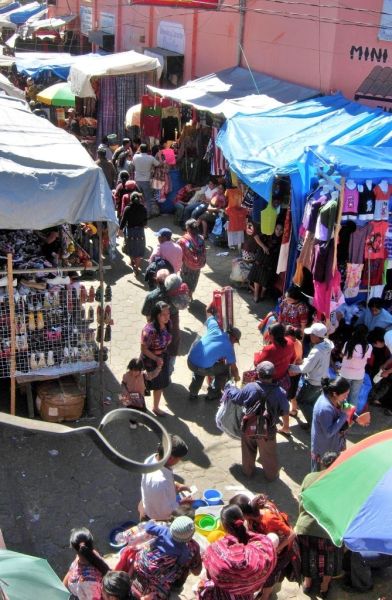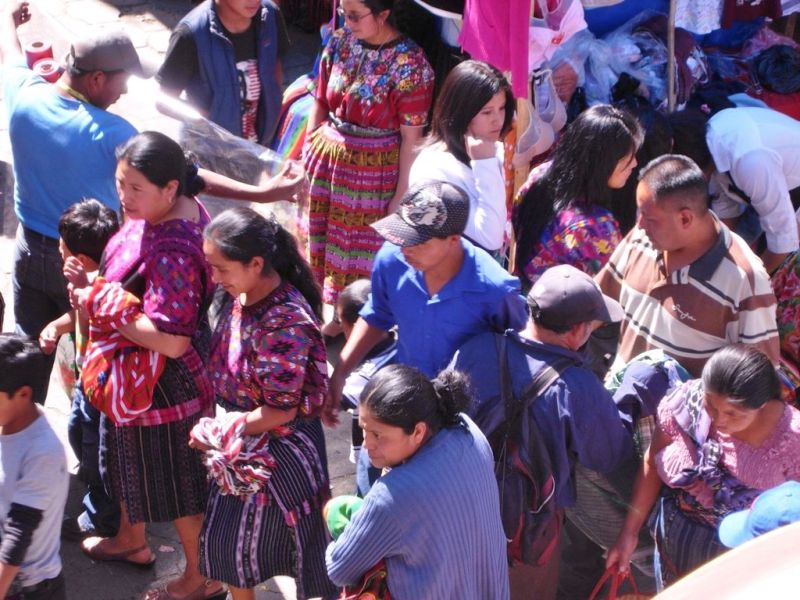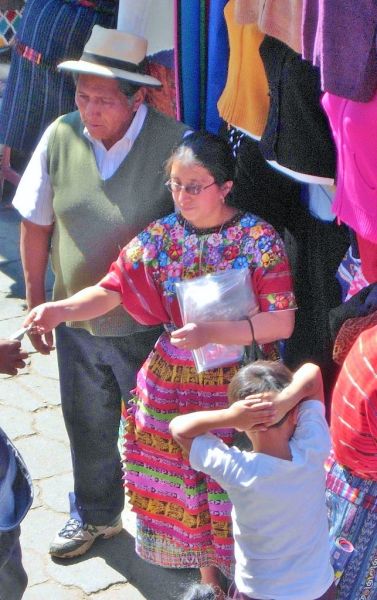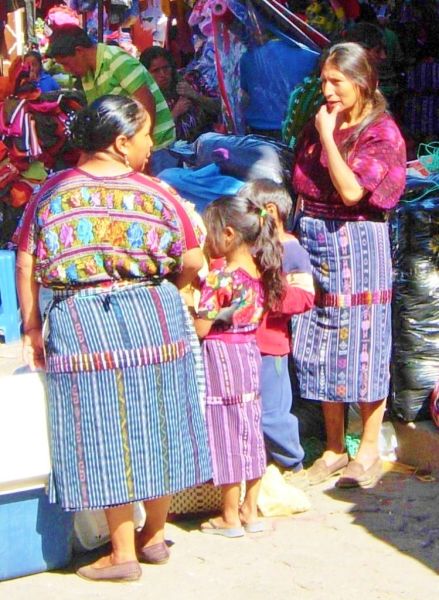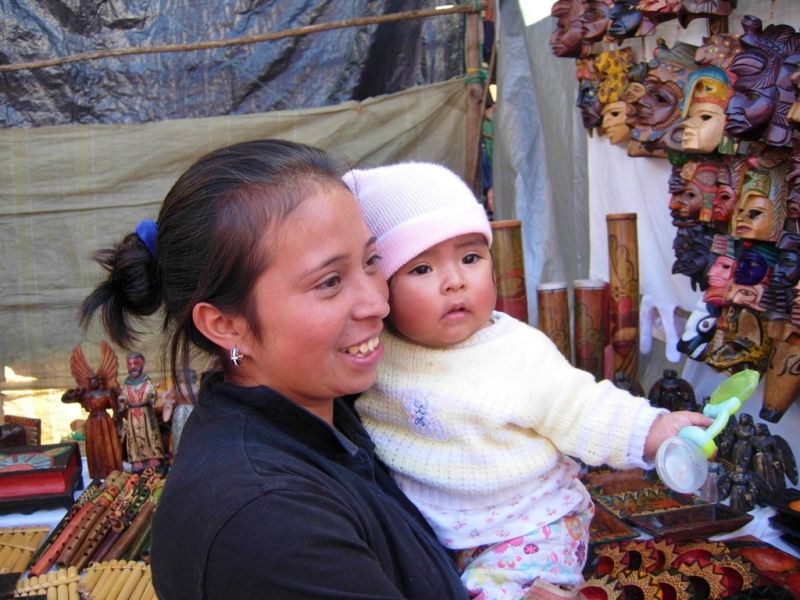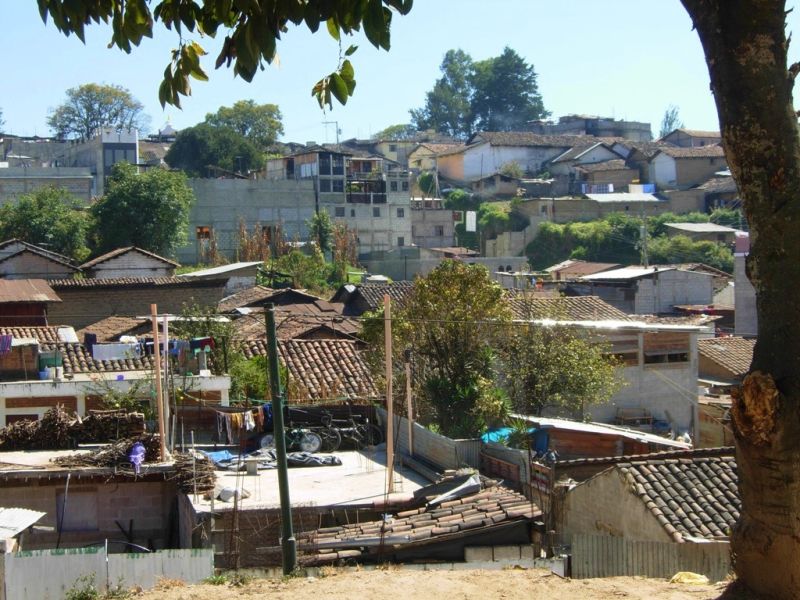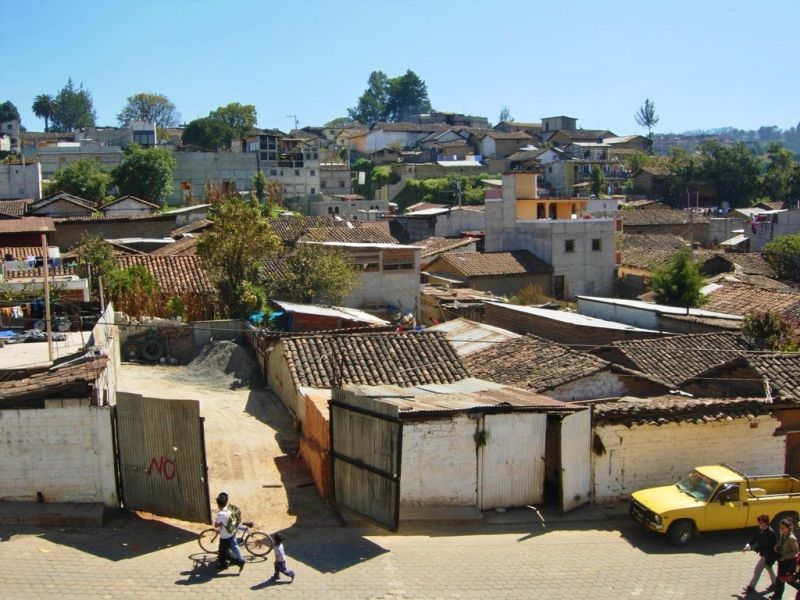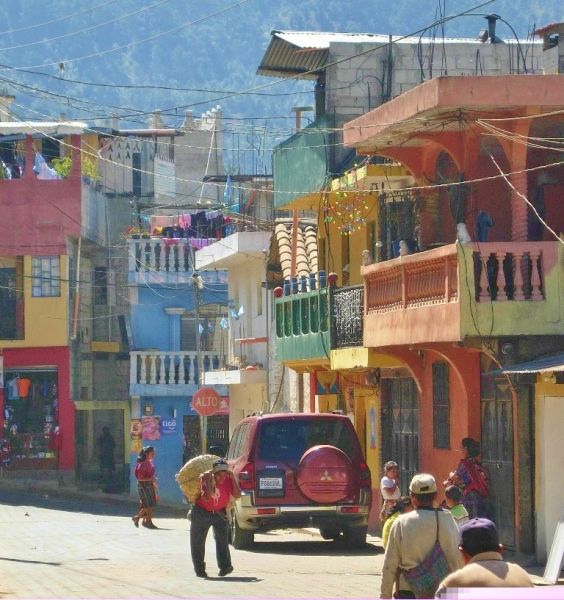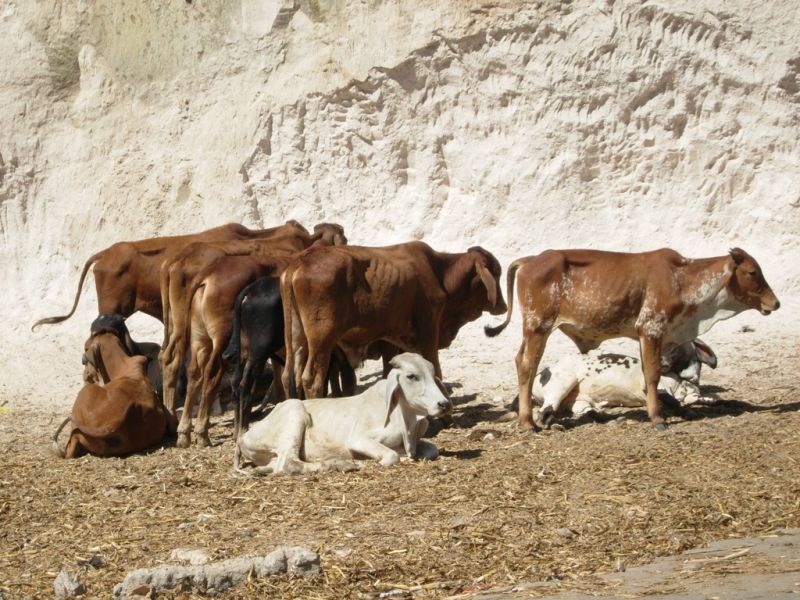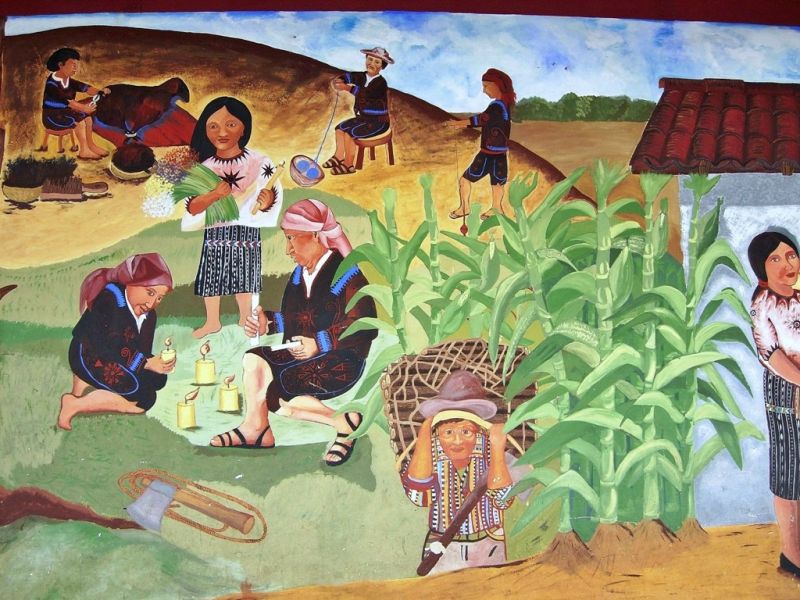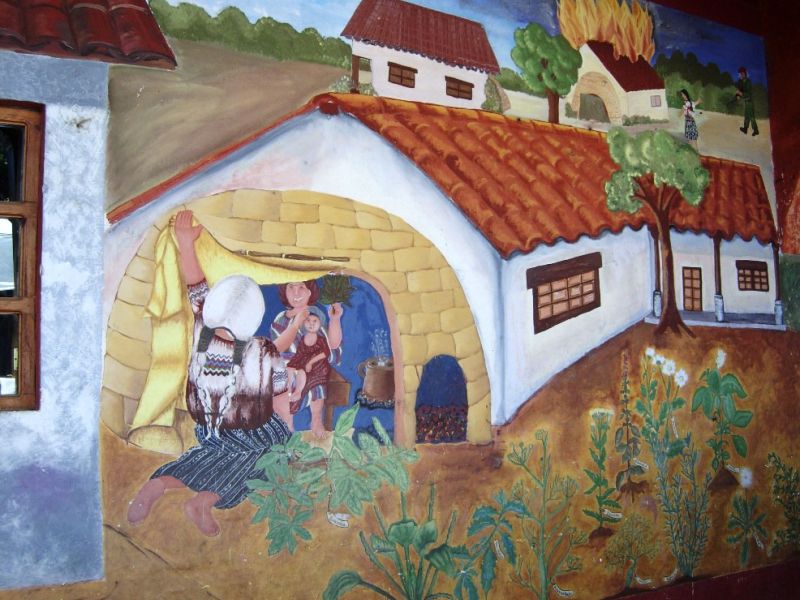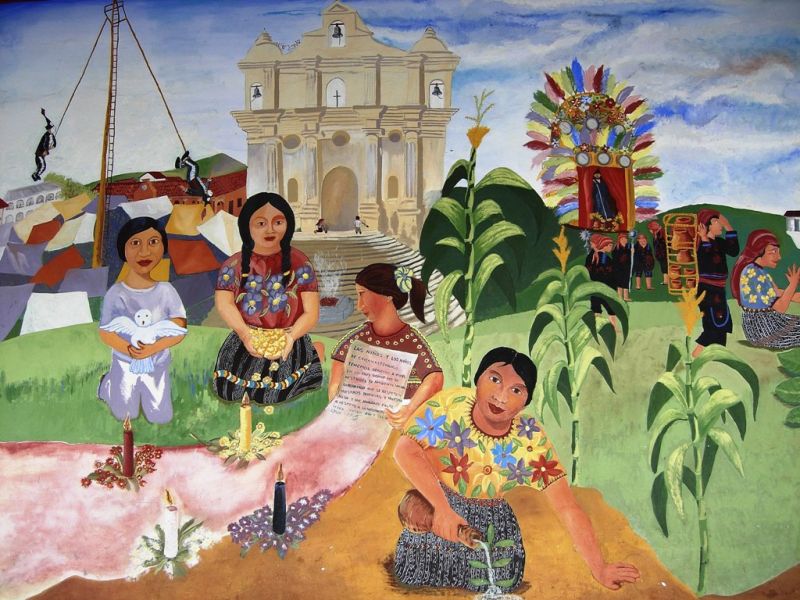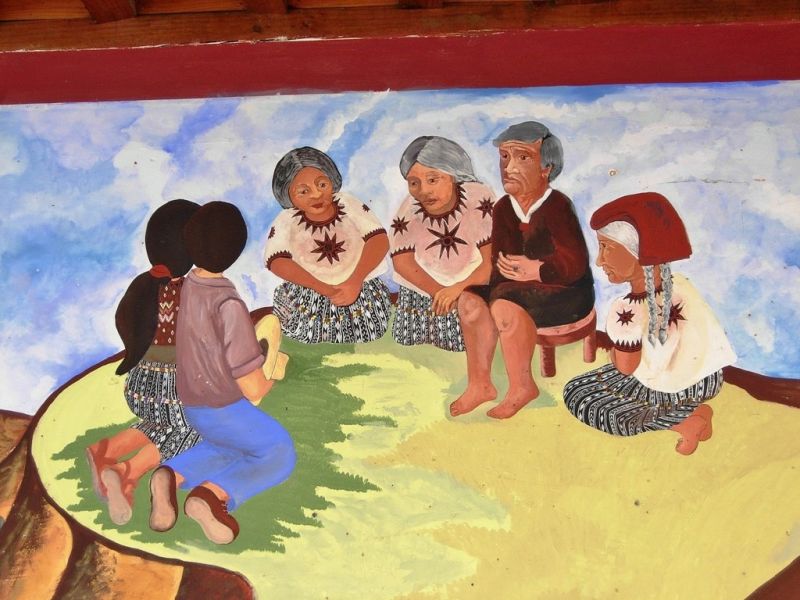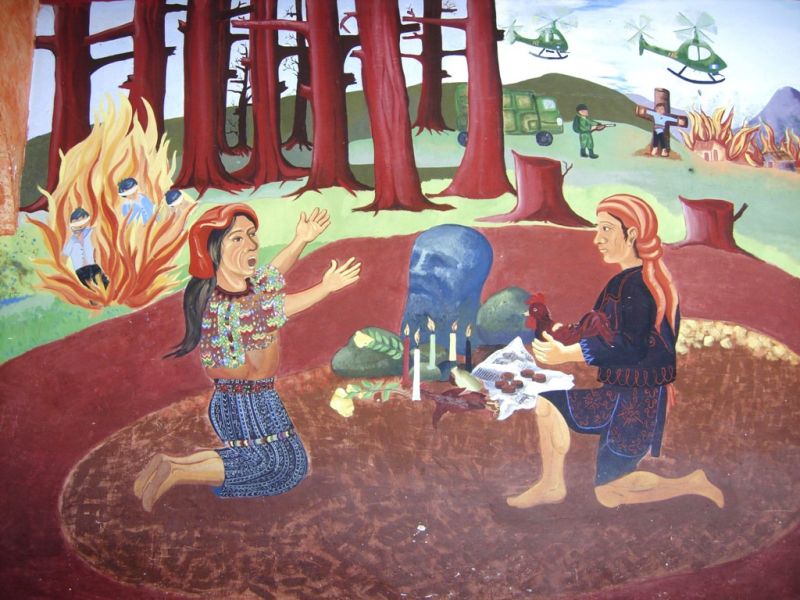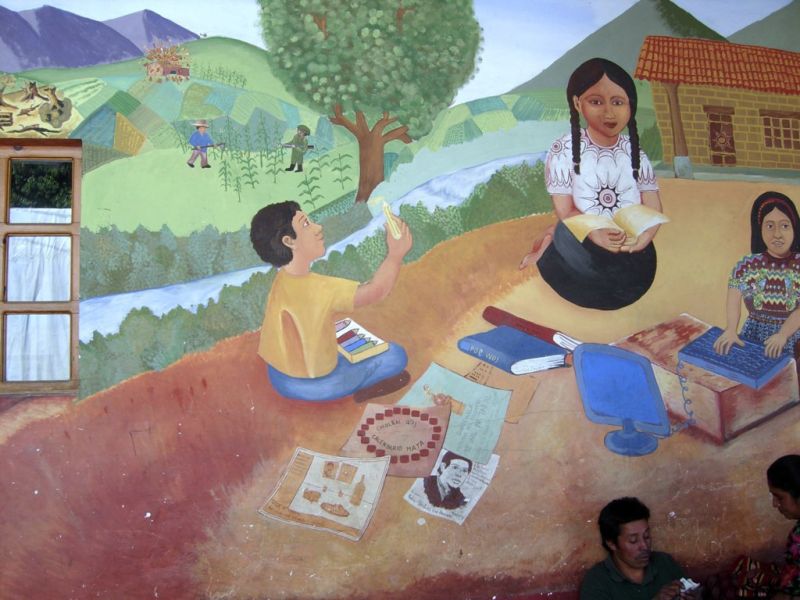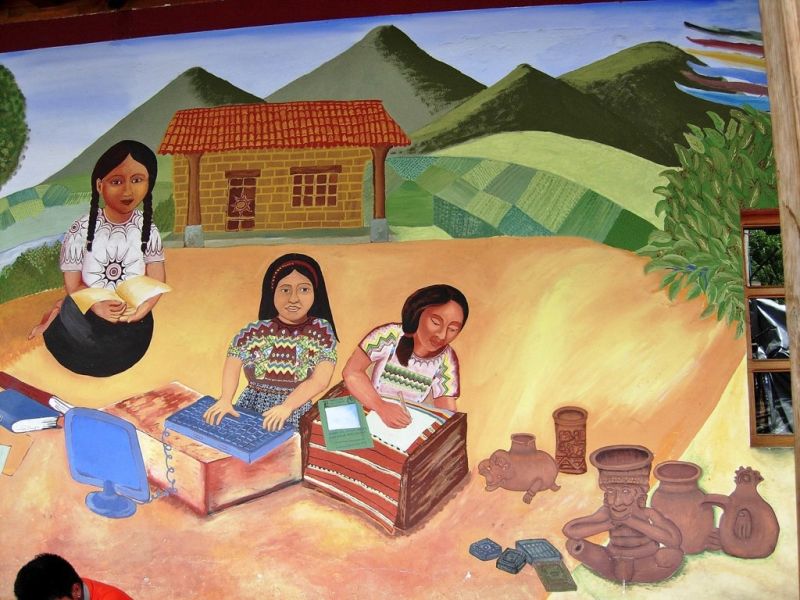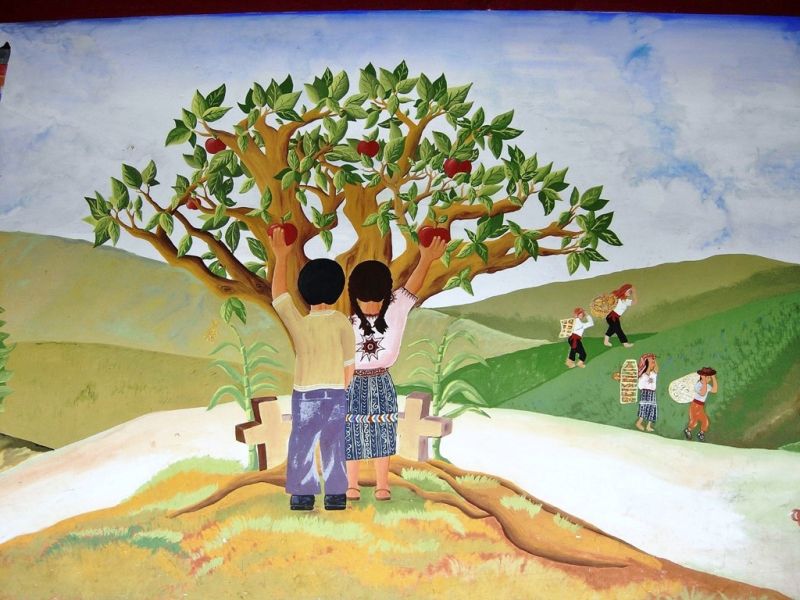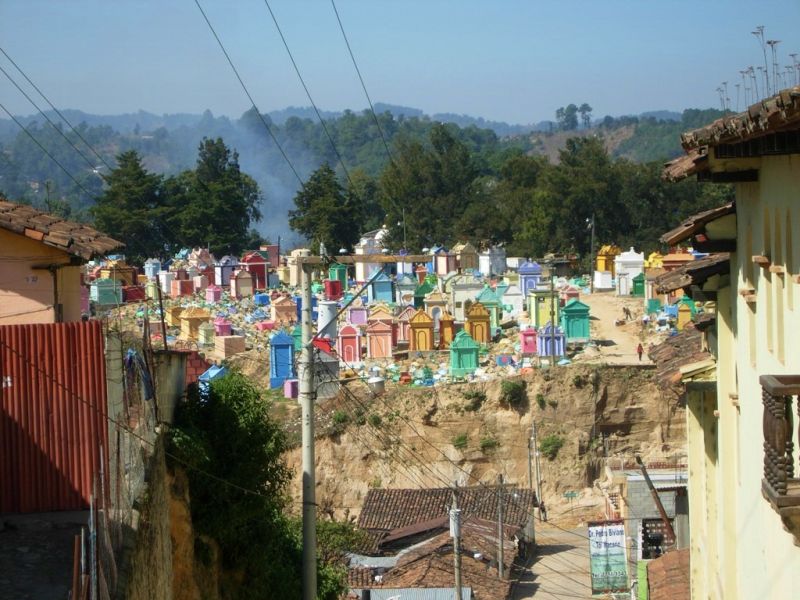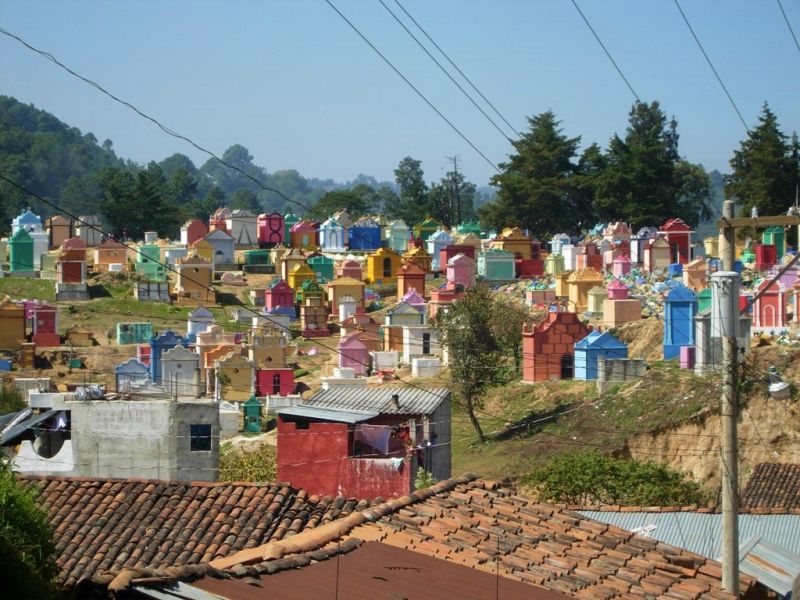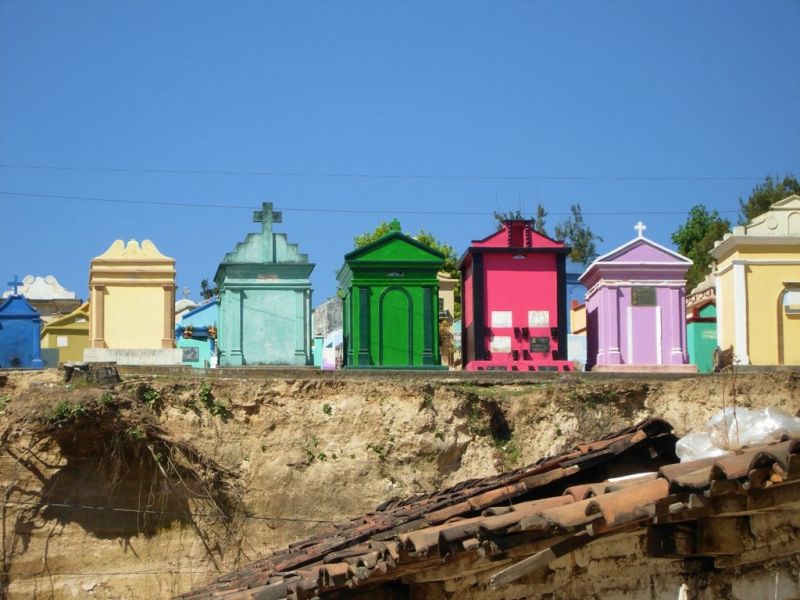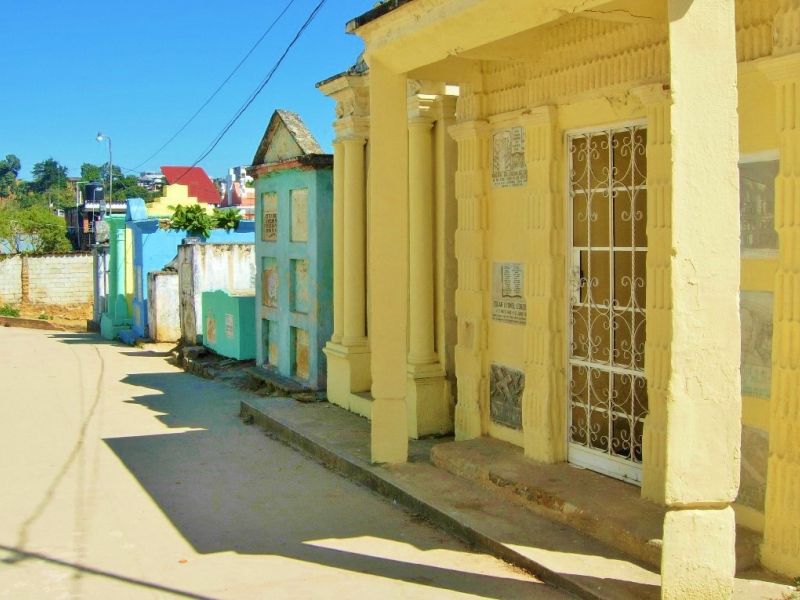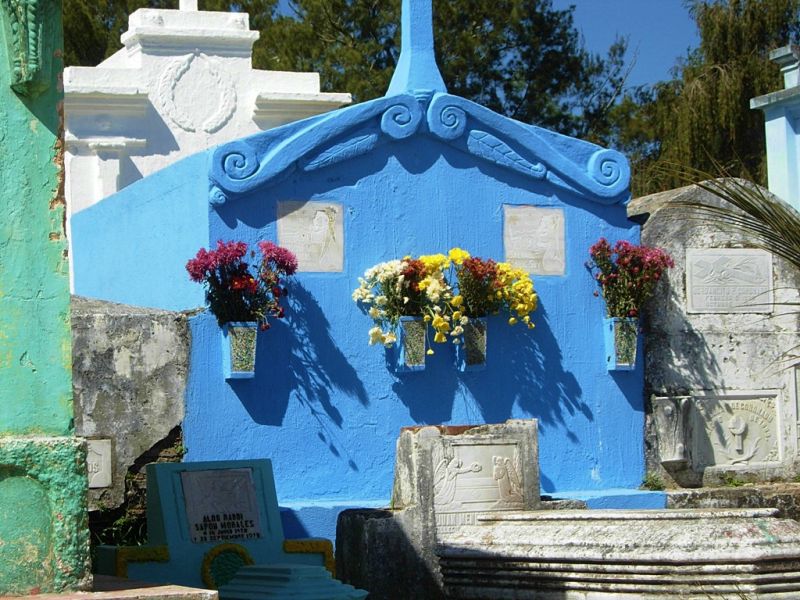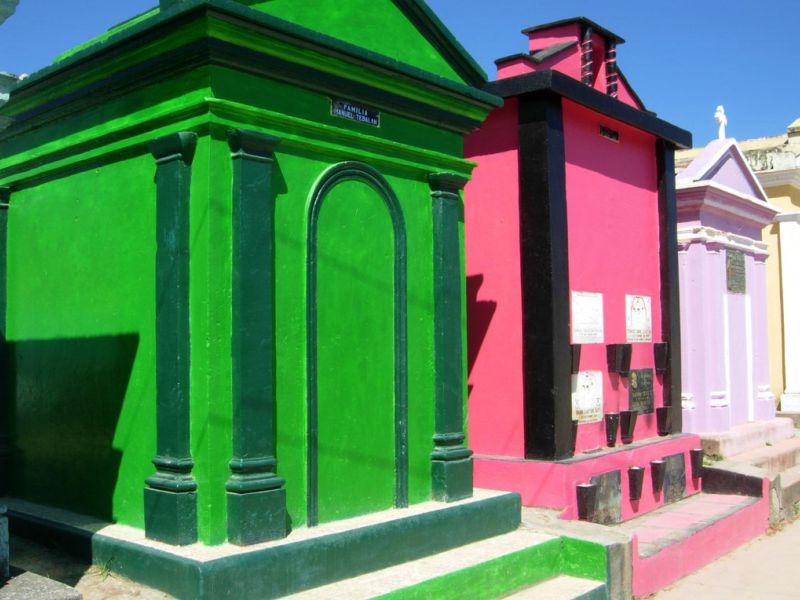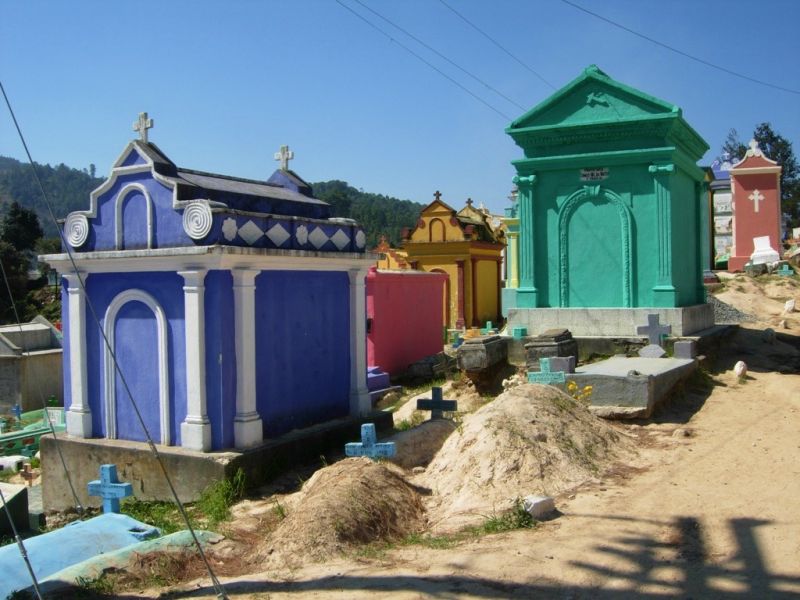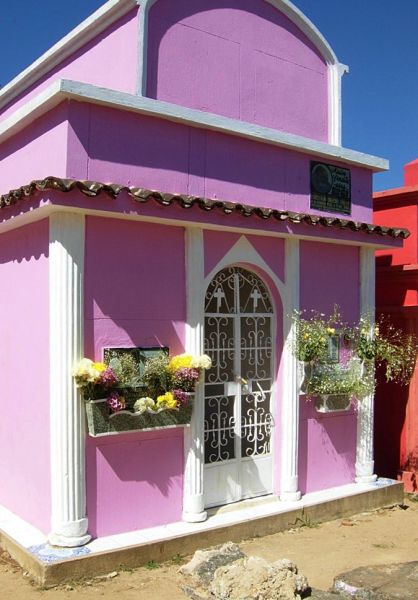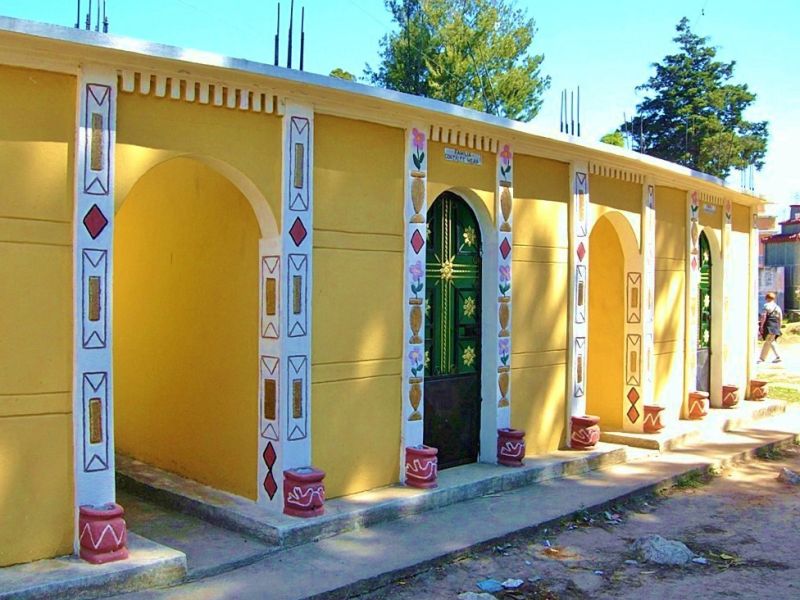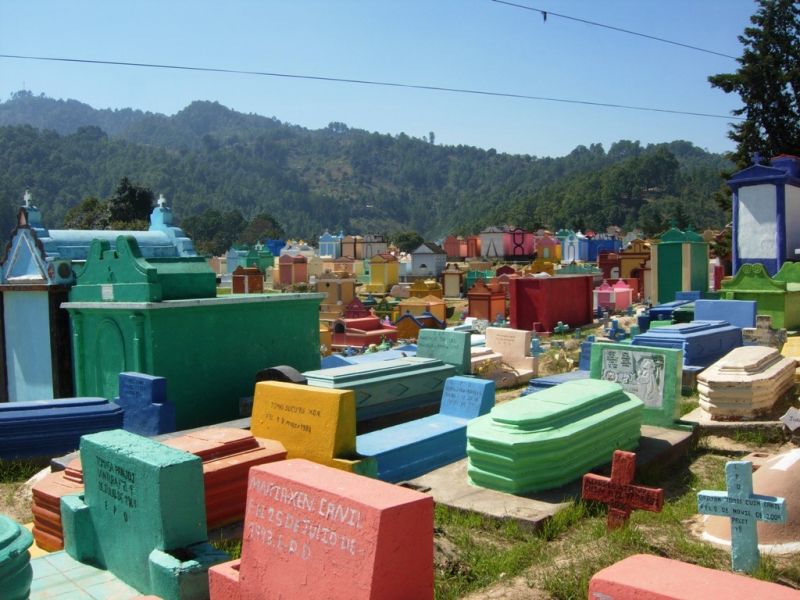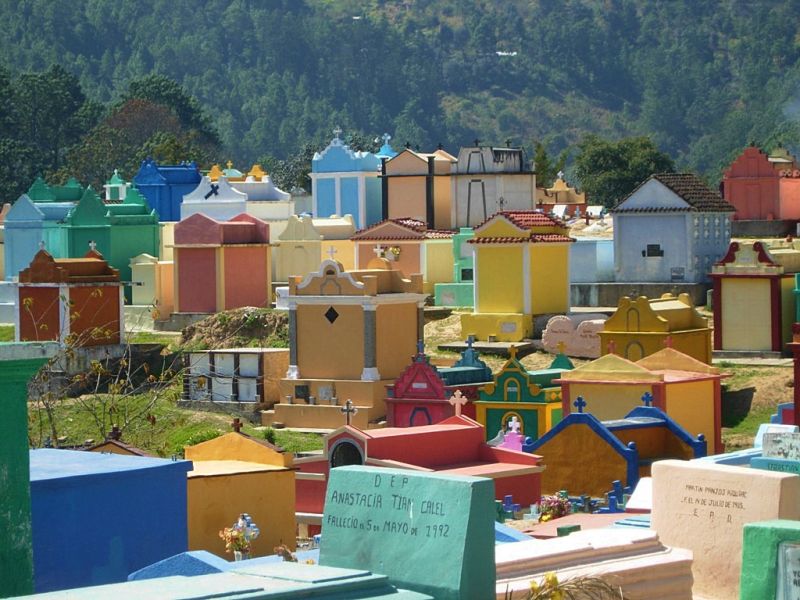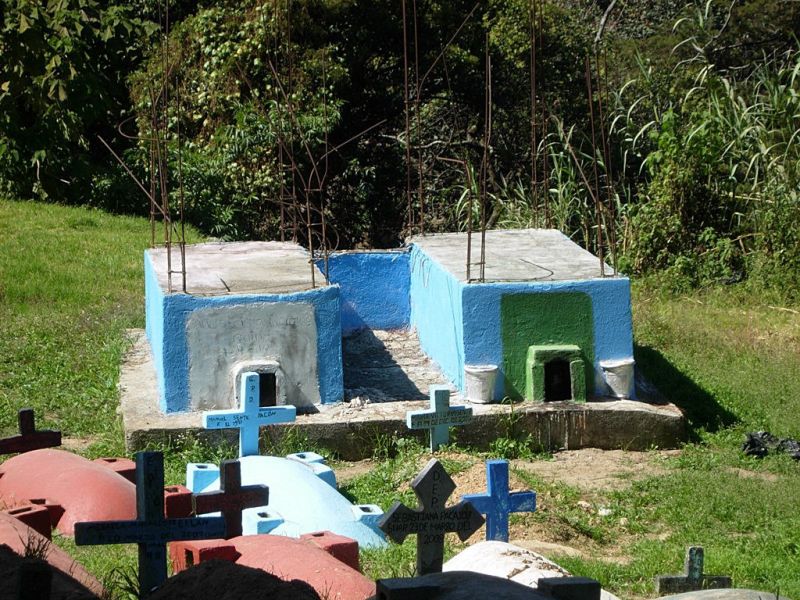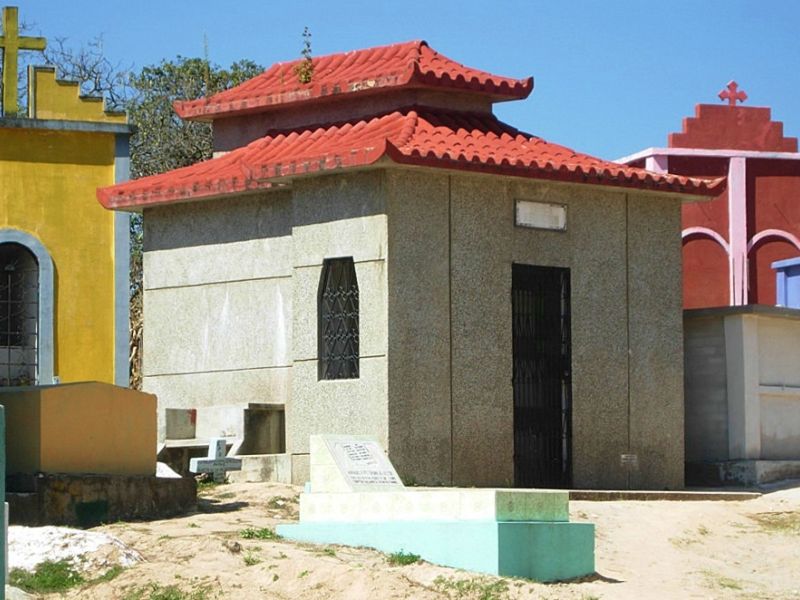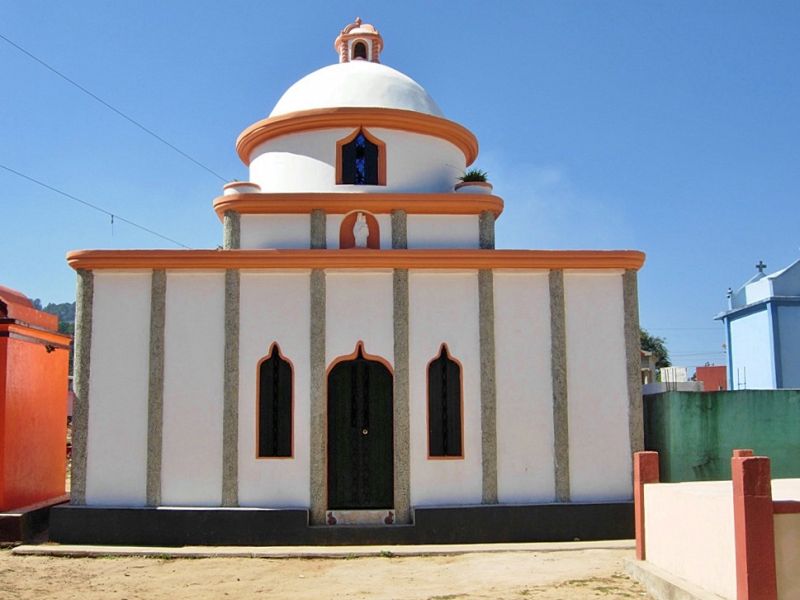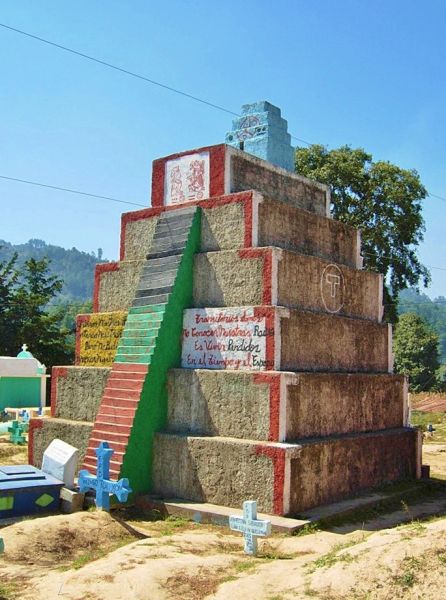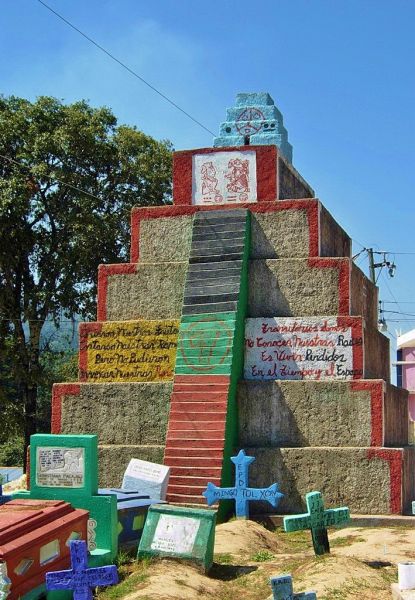






















































Chichicastenango or Santo Tomás Chichicastenango is a town of about 30,000 inhabitants and a municipality with a total of about 105,000 inhabitants in the department of El Quiché in the central highlands of Guatemala.
The name Chichicastenango comes from the Mexican Nahuatl word Tzitzicaztenanco, the "city of nettles." In the language of the K'iche'-Maya who live there, it is called Chaviar. The K'iche' make up about 95% of the population today.
Chichicastenango was an important religious and political center of the K'iche'. After the conquest by the Spanish conquistador Pedro de Alvarado in 1524, the Spaniards destroyed the old temple and built the church of Santo Tomás on its base. To this day, however, the church is also used by shamans (aj'qijab) and healers (curanderos) who light incense and candles on the floor, blow liquor over it, and make floral offerings. The 18 steps of the staircase, which may still exist from the ancient Mayan temple, correspond to the months of the 'Ab (Haab), the Mayan solar calendar. The elevation of the site to a city (villa) occurred in 1872.
The Pop Wuj (Popol Vuh), history and mythology of the Maya, existed originally certainly as Mayan manuscript in book or leporello form (codex), but the Spaniards forbade the use of Maya writing and destroyed the manuscripts as "devil's stuff". However, some Mayan priests managed to make copies of the ancient books in Latin script. One of these fell into the hands of the Spanish Dominican priest Francisco Ximénez in the Guatemalan city of Chichicastenango around 1702. Instead of destroying it according to regulations, he made another copy as well as a translation into Spanish.
Chichicastenango hosts market days on Thursdays and Sundays where vendors sell handicrafts, food, flowers, pottery, wooden boxes, condiments, medicinal plants, candles, pom and copal (traditional incense), cal (lime stones for preparing tortillas), grindstones, pigs and chickens, machetes, and other tools. Among the items sold are textiles, particularly women's blouses. Masks used by dancers in traditional dances, such as the Dance of the Conquest, are also manufactured in Chichicastenango.
